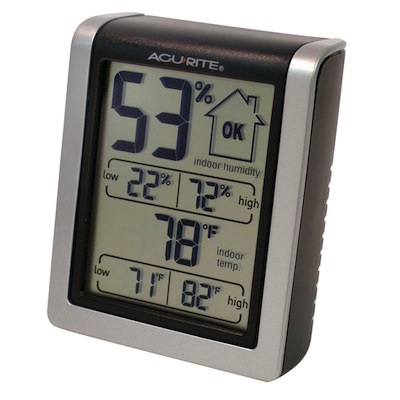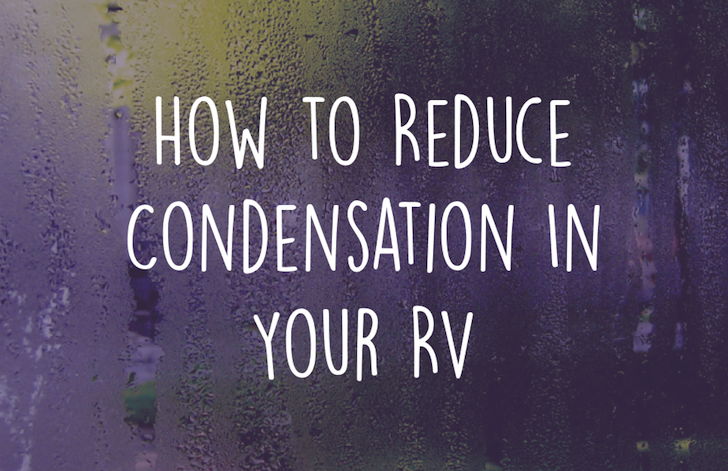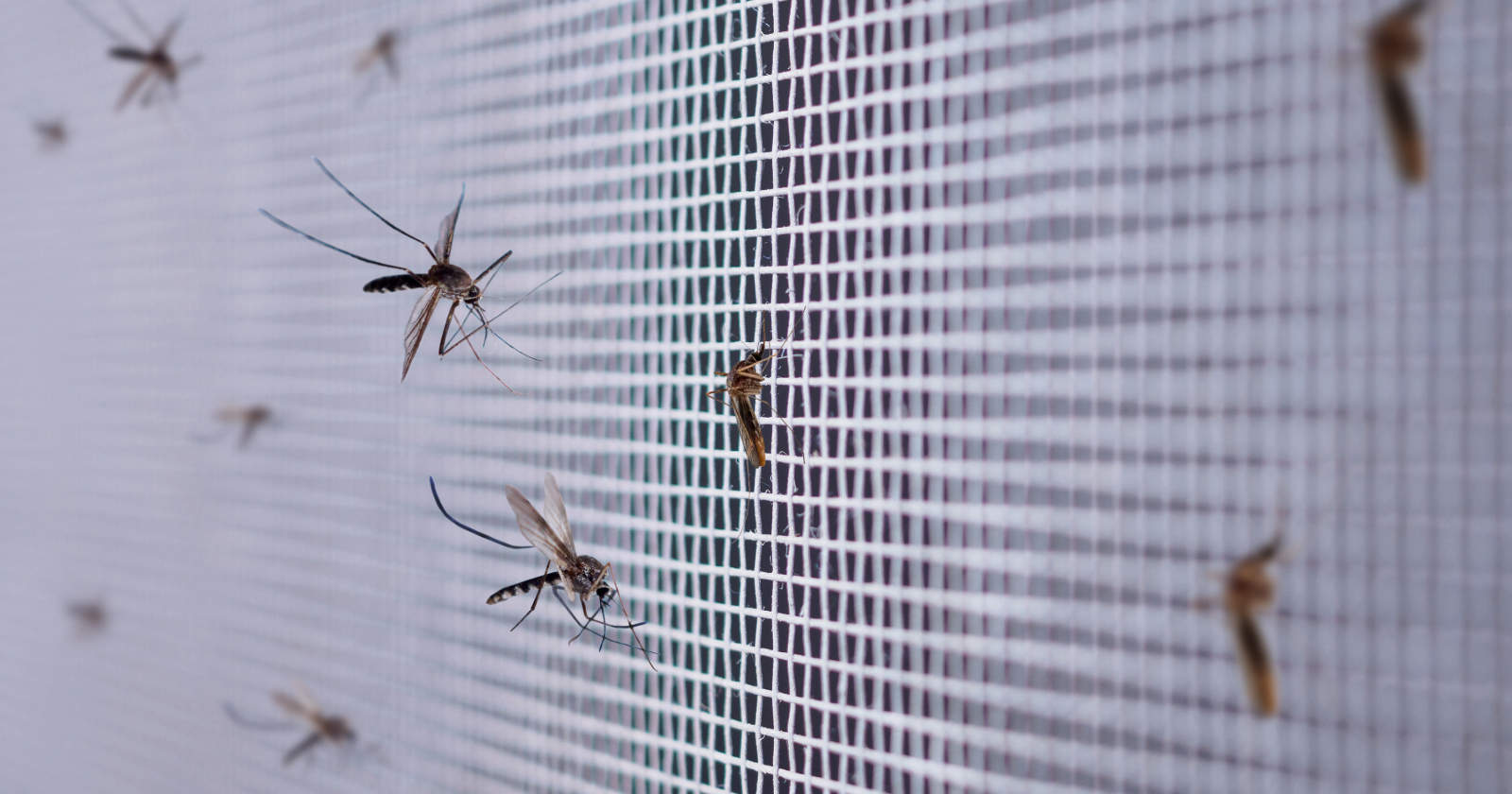Here’s a question we received from a DoItYourselfRV reader,
We have recently used our motorhome in the cool, wet month of October in Northern Ontario, Canada. We have condensation on the windowsills and would like to know if there are any remedies for this problem?
Camping in cold weather brings with it a few challenges. Besides the cold temperature, you’ll also have to deal with the formation of condensation inside your RV.
Condensation occurs when water in gaseous form changes back into its liquid form. When warm air rises, it usually cools and loses its ability to ‘hold’ water.
When air can no longer hold the water, water droplets start to form on the coldest interior surface, usually your windows.
Note: Condensation is the opposite of evaporation when liquid water changes to gaseous water vapor.
You’re probably familiar with the cloudy mirror in your bathroom after you take a long, hot shower. The water vapor condenses and turns into a liquid after it comes in contact with the cool surface of the mirror.
Condensation is unwanted in homes and RVs because it can cause mold, wood rot, and corrosion.
How you can reduce condensation in your RV
Now that you know what condensation is and why it happens, here’s how you can reduce it.
There are three main ways to reduce humidity in your RV,
- Attacking the source of humidity
- Ventilating your rig
- Increasing the temperature of the air inside your rig
These simple changes will reduce the amount of condensation on your RV windows:
- Cover all pots and pans when cooking – Heating food releases water vapor and will increase humidity levels (water content in the air).
- Dry clothes outdoors – As the clothes dry, water in the fabric fibers turn into water vapor in the air – increasing humidity.
- Use extractor fans – These fans are normally mounted in bathrooms and in the ceiling of your RV. Use them when taking a shower or cooking – especially when boiling water.
- Increase the temperature inside your rig – The amount of water that can be stored in the air is proportional to the temperature of the air. Although you can tolerate cool temperatures in your rig by wearing a hat or jacket, you’ll have a harder time controlling the condensation that comes with low indoor temperatures.
- Improve window insulation – Placing a DIY insulator on the inside of each of your RV windows will create a barrier between the air and the window’s surface, reducing condensation.
- Briefly crack a window – As dry, outdoor air mixes with indoor air, the average moisture content inside your RV will decrease, slowing condensation formation. You don’t have to keep the window open long, just a few minutes will help.
Know what relative humidity level is best
It is impossible—and also unwanted—to reduce humidity in your RV to zero. The ideal level of humidity depends on the temperature and pressure of the air.
The American Society of Heating and Air Conditioning Engineers (ASHRAE) recommends you keep indoor relative humidity levels below the following maximum levels:
Recommended Indoor Relative Humidity Versus Relative Outdoor Temperature
| Temperature Outdoors (Vs Indoor) | Optimal Indoor Relative Humidity |
|---|---|
| +20° F | 35% |
| +10° F | 30% |
| 0° F | 25% |
| -10° F | 20% |
| -20° F | 15% |

AcuRite makes one that records both the highest and lowest temperature and humidity reading each day.
It also has a display that tells you if the indoor humidity is too high or too low.
By using the table above and a digital hygrometer, you can keep the indoor humidity at an optimal level.
While a hygrometer will tell you how high the relative humidity is in your rig, you’ll need a dehumidifier to do anything about it.
Use a dehumidifier in your RV
Dehumidifiers can reduce humidity levels rapidly and without changing the air temperature.
Most dehumidifiers are easy to use, and some come with a hygrometer built-in.
Eva-Dry makes a small dehumidifier for campers, but the best dehumidifier for your RV will depend on how large of a rig you have and where you camp. You can also use Air-Dryrs to heat and dry the air in your RV.
If you spend all your time in the desert Southwest, you probably won’t need to use a dehumidifier.
Are single pane windows to blame?
While windows in most sticks and bricks homes are double pane, most RV windows are only single pane. Single pane windows have less insulating ability, and the interior side of the window is usually much colder than the interior pane of a double pane window.
The colder surface of the single pane window allows condensation to form more easily.
This is why you might notice condensation forming at a higher outdoor temperature in your RV than in your sticks and bricks home.
But before you rush out and buy double pane windows for your trailer or motorhome, read this article on why switching out your single pane windows for double paned ones might not be such a good idea after all.
The easiest, cheapest way to add extra insulation to your RV windows is to make some DIY insulators from Reflectix.
Mold depends on moisture
Mold requires moisture to grow. In fact, reducing moisture levels is the most effective way to prevent mold from forming in your RV.
Believe it or not, most experts don’t recommend testing for mold. Instead, if you smell a musty odor or notice water stains or discolored spots, you should assume you have a mold problem—testing is unnecessary.
For example, the Minnesota Department of Public Health says that,
Testing should never take the place of visual inspection and it should never use up resources that are needed to correct moisture problems and remove visible growth.
To prevent mold growth, you should keep the relative humidity in your RV below 60%, and ideally between 30% and 50%.
Conclusion
Reducing the amount of condensation on the windows of your RV doesn’t take a lot of effort. Because most RVs have single pane windows, condensation forms more quickly than on the double pane windows of a typical sticks and bricks home.
You can buy a cheap digital hygrometer to measure the relative humidity in your RV. By using a dehumidifier and digital hygrometer, you’ll be able to keep the relative humidity in an optimal range and reduce the problems associated with condensation, including mold and water damage.





Lots of people are skirting the point here. The important factor is the dew point of the air in the RV. The dew point is the temperature at which the air can hold no more water. Below that temperature, the moisture held will condense. Warm air can hold lots of water but as that air cools, it is no longer able to hold as much evaporated water. Heating the air by the furnace or the candle will not take out the moisture. It only allows the heated air to hold more. It would be simple if all the air in the camper were the same temperature. All you would have to do is keep the temperature above the dew point. BUT the cold uninsulated windows cause the air next to them to cool below the dew point so that air drops the excess moisture and it collects on the chilled windows. The windows are designed to collect that moisture and let it drain out through the drains along the bottom edge. If you soak up the water in a towel, and hang up the towel to dry by the furnace vent, all that water will go back into the heated air only to condense on the windows again. The real problem is if the heated moist air gets into the walls and condenses on the back side of the outside wall, you can get moisture and mold inside the walls. IMO, adding an outside air intake to the system would pull in dry outside air but then heat it before releasing it into the interior. Don’t confuse this with outside combustion air that feeds the furnace burners. Using the exhaust fans does the same thing but the replacement air comes in through openings throughout the RV and the drafts they create are cold.
Cold air is dry. Bring in cold air from outside, heat it, the warm air absorbs moister like a sponge. vent to outside,, you will be dry. If you only heat your interior, the air will condensate on any cold surface. Bring in cold dry air, heat, and vent. We are bone dry.
Your article says warm air holds less water, while most other articles say to lower inside temps, cool air hold less water. Why the inconsistency?
Thanks for sharing Natalie, glad it’s made your space more comfortable.
Dehumidifiers are great. They can be pricey but are worth it. It has made our travel trailer a comfy space. If we didn’t have the dehumidifier, we probably would not be full-timers.